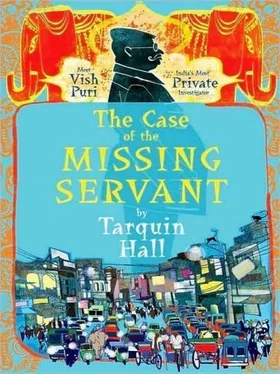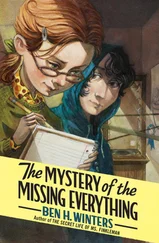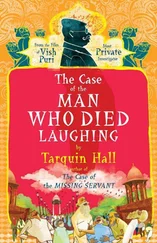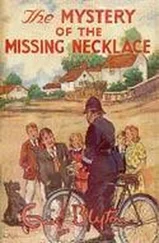Tarquin Hall - The Case of the Missing Servant
Здесь есть возможность читать онлайн «Tarquin Hall - The Case of the Missing Servant» весь текст электронной книги совершенно бесплатно (целиком полную версию без сокращений). В некоторых случаях можно слушать аудио, скачать через торрент в формате fb2 и присутствует краткое содержание. Год выпуска: 2009, ISBN: 2009, Издательство: Simon & Schuster, Жанр: Детектив, на английском языке. Описание произведения, (предисловие) а так же отзывы посетителей доступны на портале библиотеки ЛибКат.
- Название:The Case of the Missing Servant
- Автор:
- Издательство:Simon & Schuster
- Жанр:
- Год:2009
- ISBN:978-1-4165-8402-5
- Рейтинг книги:3 / 5. Голосов: 1
-
Избранное:Добавить в избранное
- Отзывы:
-
Ваша оценка:
- 60
- 1
- 2
- 3
- 4
- 5
The Case of the Missing Servant: краткое содержание, описание и аннотация
Предлагаем к чтению аннотацию, описание, краткое содержание или предисловие (зависит от того, что написал сам автор книги «The Case of the Missing Servant»). Если вы не нашли необходимую информацию о книге — напишите в комментариях, мы постараемся отыскать её.
The Case of the Missing Servant — читать онлайн бесплатно полную книгу (весь текст) целиком
Ниже представлен текст книги, разбитый по страницам. Система сохранения места последней прочитанной страницы, позволяет с удобством читать онлайн бесплатно книгу «The Case of the Missing Servant», без необходимости каждый раз заново искать на чём Вы остановились. Поставьте закладку, и сможете в любой момент перейти на страницу, на которой закончили чтение.
Интервал:
Закладка:
Puri did not expect to hear from Facecream for at least 24 hours. She had not carried a mobile phone with her so she would have to go to a pay phone out in the street to call him.
Getting away from the house could prove difficult, but after working with the Nepali beauty on several dozen operations, the detective was in little doubt that she would find a way.
At Puri's request, Tubelight had sent two of his boys to Jaipur as well. Shashi and Zia had arrived in the Pink City yesterday and been tasked with trying to locate Kasliwal's former driver, Munnalal, and locating the spot on the Ajmer Road where the unidentified woman had been dumped on August 22.
Meanwhile, there was one other lead to follow: the stones Puri had found in Mary's room. He had arranged to have them sent to Professor Rajesh Kumar at the geology department of Delhi University.
"Perhaps Doctor-sahib can provide me with a clue to where they came from," Puri told Elizabeth Rani, who was waiting in front of Boss's desk as he placed the little stones, one by one, inside an envelope.
"We must leave no stone unturned, isn't it, Madam Rani?" said Puri, chuckling at his own pun. "It's a long shot, no doubt, but then no clue is ever insignificant, no?"
"Yes, sir," she answered efficiently before returning to her desk to make the arrangements for the envelope to be dispatched to Professor Kumar's office-Professor Kumar for whom, secretly, Elizabeth Rani had a soft spot.
Puri, who likened himself to a spider at the center of a web with silky tendrils branching out all around him, eased back into his chair, confident that all the little secrets of the Kasliwal household would soon be his. There wasn't another detective in India, private or otherwise, who could have handled it better. And (as Puri acknowledged, begrudgingly) there was only one to equal him.
The young hotshots straight out of detective school (like that bloody Charlie, Harun what's-his-name, who always wore a silk suit and gelled his hair so every goonda could spot him coming a mile off) certainly offered little in the way of competition. The problem with such Johnny-come-lately types was that they watched too much American television and imagined every case could be solved by turning up at a crime scene and using an ultraviolet light.
Not that forensics didn't have its place. As Puri had told a class of cadets at the Delhi headquarters of the Central Bureau of Investigation (the Indian equivalent of the FBI) during one of his recent lectures, Indians had been pioneers in the field.
"In the fifteenth century, one Delhi court investigator, Bayram Khan, solved the most brutal murder of the Great Mughal's courtesan by matching a hair he located floating in the baths where she was drowned by the eunuch Mahbub Alee Khan," the detective had read from a speech that had been typed-and of which the English grammar had been greatly improved-by Elizabeth Rani. "Also let us not forget the Tamil alchemist, Bhogar, who led the way in substance testing. For example, he made extensive comparisons of tobacco ashes. This achievement came a full one and a half centuries before British detective Sherlock Holmes wrote a monograph on the same subject without so much as acknowledging the earlier work."
Puri had gone on to talk about the great Azizul Haque and Hem Chandra Bose, who developed the fingerprint classification system and opened the first Fingerprint Bureau in Calcutta in 1897-although Sir Edward Richard Henry took the credit for their pioneering industry.
"So, as we can see, forensics certainly has its uses," he'd added. "But there is no substitute for good, old-fashioned intelligence gathering. The microscope cannot match the power of the human eye, we can say."
Naturally, in this field, India had also led the world.
"Some two thousand and three hundred years ago, Mr. James Bond's ancestors were living in caves," he'd said. "In those dark, distant days, there was no Miss Moneypenny, no Mr. Q, and the only gadgets were flints to strike together to make fire."
This point had got a gratifying laugh from his audience.
"But in India at this time, we were having the great Maurya Empire," the detective had continued. "The founder of our greatest dynasty was, of course, the political genius Chanakya. It was he who established what we can call the art of espionage. He was, in fact, the world's first spymaster, establishing a network of male and female secret agents. These satris, as they were thus known, operated throughout the empire and its neighboring kingdoms."
Puri had not needed to remind the cadets that it was Chanakya who had written the world's first great treatise on statecraft, the Arthashastra , an extraordinarily practical guide to running and nurturing a fair and progressive society-one that India's modern rulers, and indeed the world's, would have done well to study. But he had drawn their attention to the section on running a secret service and read an excerpt:
"'Secret agents shall be recruited from orphans. They shall be trained in the following techniques: interpretation of signs and marks, palmistry and similar techniques of interpreting body marks, magic and illusions, the duties of the ashramas, the stages of life, and the science of omens and augury. Alternatively, they can be trained in physiology and sociology, the art of men and society.'"
Chanakya, Puri explained, had recommended numerous disguises to be adopted while conducting clandestine operations.
"Brothel keepers, storytellers, acrobats, cooks, shampooers, reciters of puranas, cowherds, monks, elephant handlers, thieves, snake catchers and even gods, to name just a few," he said. "For agents planning to infiltrate a city, Chanakya suggested adopting the cover of a trader; those working on the frontiers should pose as herdsmen. When a secret agent needed to infiltrate a private household, he urged the use of-and I quote-"hunchbacks, dwarfs, eunuchs, women skilled in various arts and dumb persons.'"
Nowadays of course, dwarfs were no longer easy to recruit since many of them had found work in Bollywood. The wealthy classes were no longer inclined to hire hunchbacks as servants. Disguising yourself as a nun was no longer a guaranteed way of gaining access to the home of a high official. And, ever since one-rupee shampoo sachets had become available at paan stalls, shampooing had ceased to be a viable profession.
But the Arthashastra remained the basis of Puri's modus operandi. The section on the recruitment, training and use of assassins aside, the treatise remained as instructive today as it had proven to the rulers of the great Maurya Empire.
In all that time, human character had changed little.
"Nowadays," he'd concluded, "a man can fly from one end of the planet to another in a few hours only. Achievements in science are at a maximum. But still, there is more mischief going on than ever before, especially in overpopulated cities like Delhi."
Puri believed this was because the world was still passing through Kali Yuga, the Age of Kali, a time of debauchery and moral breakdown.
"More and more, people's moral compass is turning 180 degrees. So you must be vigilant. Remember what Krishna told Arjuna at the battle of Kurukshetra. 'The discharge of one's moral duty supersedes all other pursuits, whether spiritual or material.'"
Eleven
With Facecream now inside the Kasliwal household, Puri decided to turn to Brigadier Kapoor's case.
He spent a few hours on the phone checking into the prospective groom's background and soon learned that Mahinder Gupta was to be found at the Golden Greens Golf Course most evenings.
The club was in NOIDA, the North Okhla Industrial Development Area to the east of Delhi, which, despite its clumsy acronym, had become one of the most elegant addresses for Delhi's wealthy, image-conscious elite. To reach it, Handbrake took the road that passed the magnificent Humayun's Tomb and frenetic Bhogal market with everything from toilets and bamboo ladders to cotton mattresses for sale on the sidewalks.
Читать дальшеИнтервал:
Закладка:
Похожие книги на «The Case of the Missing Servant»
Представляем Вашему вниманию похожие книги на «The Case of the Missing Servant» списком для выбора. Мы отобрали схожую по названию и смыслу литературу в надежде предоставить читателям больше вариантов отыскать новые, интересные, ещё непрочитанные произведения.
Обсуждение, отзывы о книге «The Case of the Missing Servant» и просто собственные мнения читателей. Оставьте ваши комментарии, напишите, что Вы думаете о произведении, его смысле или главных героях. Укажите что конкретно понравилось, а что нет, и почему Вы так считаете.












